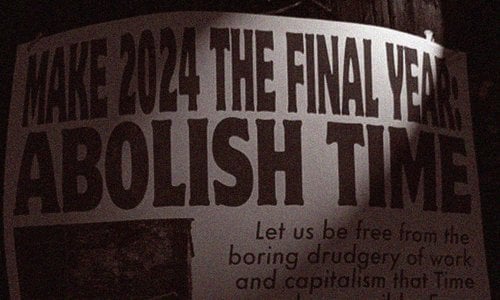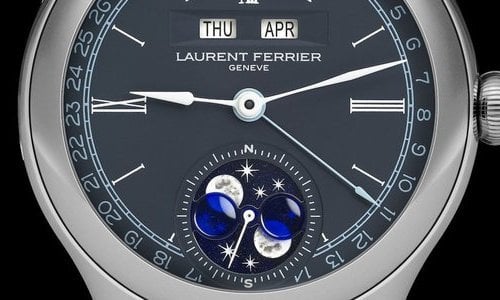For our latest magazine issue, IC-Agency asked Details, a crossmedia communication agency, to compare the websites of four luxury watch brands. Europa Star selected Hublot (hublot.com), Jaeger-LeCoultre (jaeger-lecoultre.com), HermÈs (hermes.com) and Boucheron (boucheron.com), all major players in the haute horlogerie sector. As Web specialists and experienced IT technicians, we have presented our research around five categories, which reflect the latest innovations in the field.
Indexing: How easily is the brand’s official website found by searching for a particular model on a search engine?
At the top of the list, Jaeger-LeCoultre is the only site to use an efficient system of indexing for its brand and its watch models. There are no extraneously links on its pages. Next is Boucheron, whose official site also immediately appears when searching one of its watches. Hublot is in third place. Although its models are indexed on the sites of specialized watch sites or dealers, the search for a particular model does not bring up the brand’s official website. In fourth place, HermÈs’ policy is even more discreet since its collections only appear in luxury e-magazines.
Aesthetics and ergonometric aspects: How well do the graphics and animations interact?
Boucheron is in the winner’s circle for this category, as its site reflects a very interesting use of Flash visuals. The navigation tools are original and the viewer can move easily and smoothly from one object to another. In second place is Hublot, which takes a different approach. Its masculine and resolutely contemporary universe offers constant motion and activity with its many animated sections, such as the Hublot TV and a virtual visit. Jaeger-LeCoultre takes the third position, with an omnipresent classical look both in format and in presentation. The site’s navigation tools are easy and practical to use and thumbnails display product details. In fourth place, HermÈs is rather surprising since it displays a very playful home page with pencil drawn visuals. But advancing further into the site, the viewer is confronted with a confused navigation system that leads to the ‘e-boutique’.
Balance between brand image and its website: Is there an aesthetic consistency between the brand and its site?
Taking first place in this category, Hublot shows a great deal of innovation by creating a formidable vehicle for communicating with its audience. The tone, form and technique emphasize and support the brand and its products. In second position, the Boucheron site evokes the similarities and familiarity of the brand. The aubergine colour is dominant; the Boucheron dome is skilfully integrated into the site and the products and services are elegantly showcased. Jaeger-LeCoultre takes third place with a site that reflects and respects the brand’s tradition with the use of sober tones and classic forms that evoke the image of its bricks and mortar boutiques. HermÈs is again in fourth position. Even if the brand’s authenticity is evoked in terms of colours and hand-drawn illustrations, the site is far from exhibiting the classic reference codes of the famous company.
The functionality of the ‘Watch Finder’: Can viewers rapidly find a model when they have the references?
Boucheron takes the lead in this category. Its site proposes a type of ‘headline’ watchmaking under a regularly updated section called ‘At the moment’. Then, it directs visitors to a generic search, or even better, to a personalized search in the ‘watch’ category. Hublot falls into second place because its ‘Watch Finder’ cannot be found on the first click. The site offers a selection of new products with a link to images and descriptions. The access to the catalogues, however, is not the first navigation bar but is found under the ‘Collection’ page, which leads the viewer to various products. In third place is Jaeger-LeCoultre, which does not propose a ‘Watch Finder’ but displays a variety of windows, through which the visitor must navigate to find the desired product. HermÈs, in last place, undoubtedly represents the site offering the least services since it has no ‘Watch Finder’ at all. The viewer can only see the products that are for sale in the ‘e-boutique’.
Find a local retailer: Is it easy for the potential client to find a local or international dealer who sells the desired product?
Jaeger-LeCoultre moves back into first place, with a site that offers simple but efficient functionality and lists the contact information of all its resellers around the world. In second place, HermÈs lists its own stores as well as official international retailers. Boucheron, in third position, directs the visitor easily to its retailers listed by country. Hublot is in last place since its ‘Store Location’ is not very practical. It doesn’t provide the names of retailers in Europe or on an international scale.
Through this study, various types of information and initiatives can be seen from the websites examined. Each brand communicates differently in its own space and attracts attention by offering certain catchy details. Hublot creates a real universe in high technology in a multitude of innovative ways, such as the ‘iPod download’ or the Hublot TV. The site of Jaeger-LeCoultre focuses on simplicity, functionality, and rapidity. Yet, it also uses, in a very original manner, a Flash micro module in the form of a diving mask to present the Master Compressor Divers collection. HermÈs stands out by its singularity, presenting a surprisingly minimalist environment. With its fantasy pencil drawings and magnifying loupe over the textures, its style is infused with character. Finally, Boucheron presents a virtual showroom in a very commercial yet distinguished manner where a variety of services are indicated, not the least of which is to delicately conceal the price.
Source: Europa Star December-Januar 2008 Magazine Issue




